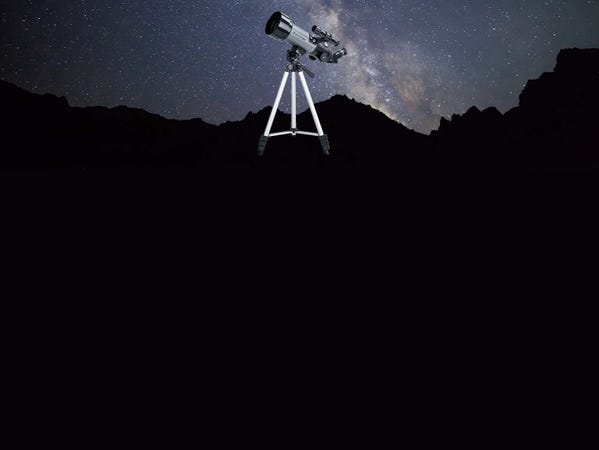Telescopes
Tips for Choosing the Best Telescope
You have a broad view of the world, but with a telescope you can expand that vision to include the entire universe beyond. Aspiring astronomers and nature enthusiasts of all ages will enjoy learning about all the dazzling and mystifying celestial objects that lie above and beyond the earth. Buying a telescope, like contemplating the universe, can be overwhelming. These tips can help you sort through Best Buy’s selection of star gazing scopes to find the right one for you.
1. Telescope types
Telescopes are designed to brighten, as well as magnify, your views of celestial objects. Refractors, reflectors, compound (catadioptric), and computerized telescopes do this in different ways.
• Refracting: These telescopes have a convex objective lens at one end and an eyepiece at the other, providing better image contrast than reflecting telescopes, but generally coming in at a higher price point. They are a popular choice for their crisp images and versatility.
• Reflecting: These telescopes use a concave mirror in place of an objective lens and unlike refractors which are a sealed tube, remain open at one end. The mirror sends a cone of light to a secondary, smaller and flatter mirror, which intercepts the light and sends it up to the eyepiece.
• Catadioptric: This is a specific type of reflecting telescope with a correcting lens sitting at its top to form the image. The light passes through the corrector, reflects off the primary and then a curved secondary mirror, finally passing through a hole in the main mirror and reaching the eyepiece. This design is ideal for city use where there is light pollution.
• Computerized (GOTO): These telescopes are integrated with systems that point the telescope and locate celestial objects for you. While they offer convenience and speed for experienced astronomers, they can be tricky for beginners to set up as they need you to pinpoint the basic constellations and bright stars yourself, and require such a procedure with every new viewing session.
2. Telescope visual specs
• Aperture: The aperture is the diameter of the telescope’s main light-gathering lens or mirror. The bigger the aperture, the sharper and brighter your view will be, and the more clearly faint objects will appear.
• Magnification: Aperture and magnification are a crucial combination. Magnification without ample aperture only displays blurry, dim picture, as not enough light gets in to clarify your zoomed view successfully. You can pull approximately 20x-50x of magnification per inch of aperture under adequate visibility conditions.
• Focal Length: The focal length measures how strongly the optical system converges or diverges light. A shorter focal length bends rays more strongly, bringing them to a focus in a shorter distance. A longer focus (an f/ratio with a higher number) provides better high-magnification viewing.
3. Telescope mounts
A steady and smoothly working mount is crucial to a satisfying telescoping experience. Long-focus units will require bigger, heavier mounts, making them less portable.
• An equatorial mount allows the telescope to move in north-south and east-west directions, which makes it easy to track celestial targets simply by moving the telescope around one aligned axis. Some have electric motors that make this task even easier.
• An altazimuth mount moves up-down (in altitude) and right-left (azimuth), similar to a photography tripod. These are generally lighter than equatorial models, but require tracking be done manually, so you have to move the telescope in two directions simultaneously to track objects in the sky.
• A Dobsonian mount is stable and low cost, and easy for amateurs to set up. It is mounted onto the ground with a heavy platform that lets it spin similarly to a Lazy Susan, and is ideal for telescopes with large apertures.


